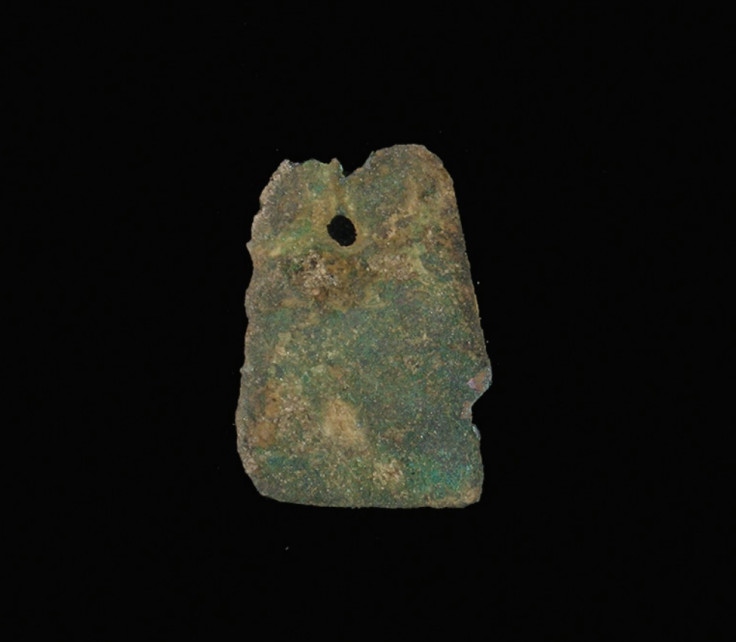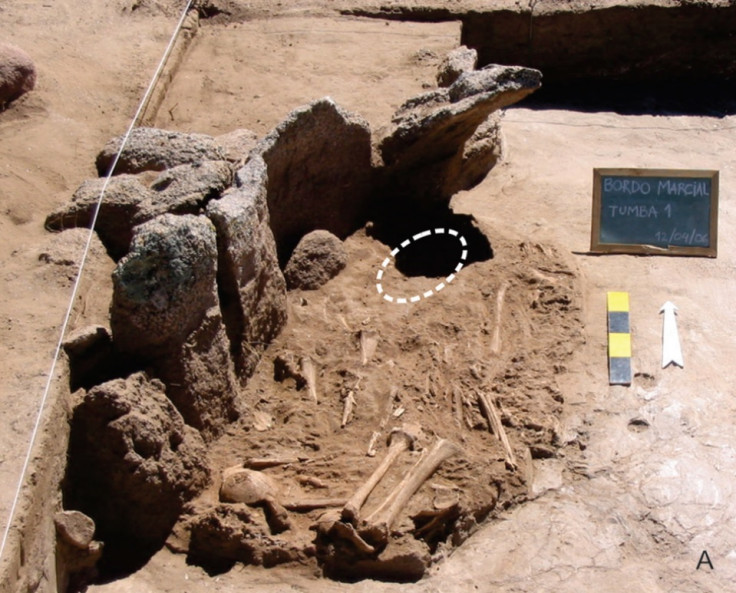3,000-year-old copper mask found in mass grave is oldest ever discovered in South America
The mask was found in a grave with 14 children, women and men.
A delicate mask unearthed in Argentina is the oldest carefully crafted copper object ever found in South America.
It is a delicate find – just 1 mm thick, but 18 cm high and 15 cm wide. Because of its fragility, the archaeologists decided not to remove its weathered surface layer to polish the mask to its copper colour.
Despite this, even after 3,000 years the eyes, a nose and a mouth are clearly visible, marked out with holes in the mask. A series of smaller holes around the edge suggest that it could have been attached to the head with threads.
"To date, the mask is the oldest intentionally shaped copper object discovered in the Andes, and suggests that more than one region was involved in the origin of this technology," the authors, led by Leticia Inés Cortés of the University of Buenos Aires, wrote in the study.
"Some 3000 years ago, artisans shaped the mask by a process of cold hammering and reheating, before depositing it in direct association with human remains."
These human remains were those of at least 14 people, with children, women and men in a single tomb. The skeletons were not in good shape when they were excavated. Most were fragmented and jumbled up together. Next to the main tomb, a child of about 8 to 12 years old was buried at about the same time with a small stone bead and a copper pendant.
Local residents of the village of La Quebrada in the Cajón Valley, Catamarca Province, made the discovery. The mask washed out of the soil after the summer rainy season in 2005, before being handed to archaeologists. Formal investigation of the site began soon after, revealing the mass grave and the child's grave with the copper pendant.

The artefact predates all face-shaped masks found in Argentina, where about 50 later specimens have been found. It was forged at a time of transition in Andean culture, when hunter-gatherer societies were giving way to agricultural villages.
The discovery overturns the idea that copper metalwork emerged among larger and more socially complex societies to the north of the Andes. The location of this mask suggests that advanced metalwork in fact originated among smaller, remote communities.
"To date, the mask is the oldest intentionally shaped copper object discovered in the Andes, and suggests that more than one region was involved in the origin of this technology," the authors wrote.
The research is published in the journal Antiquity.

© Copyright IBTimes 2025. All rights reserved.






















